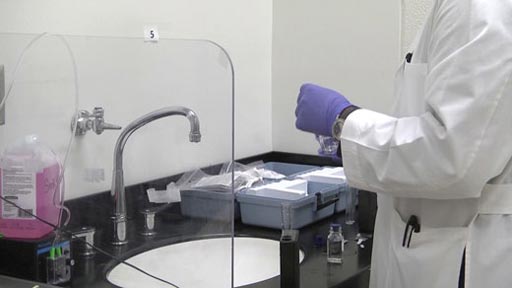Evidence Shows Nosocomial Infections Linked to Hospital Sink Bacteria
By LabMedica International staff writers
Posted on 07 Mar 2017
Investigators working with a unique hospital sink laboratory demonstrated that nosocomial infections, including those of multiple drug resistant organisms, are spread by bacterial colonies in the waste pipes that migrate up to the sink strainers where they are spread to the surface of the sink, faucets, and nearby counters.Posted on 07 Mar 2017
To better understand how patients become infected with bacteria in the hospital setting, investigators at the University of Virginia built a unique sink lab containing five identical sinks, modeled after the most common sinks in the University of Virginia's hospital in Charlottesville. Escherichia coli bacteria that had been labeled with green fluorescent protein (GFP) were allowed to colonize the sinks.

Image: New research shows nosocomial infections may be spread through bacteria in drains that migrates up into hospital sink drains (Photo courtesy of the University of Virginia).
The investigators found that the bacteria established colonies in the elbows of the drainpipes. Subsequently, a biofilm spread upward over seven days to reach the strainer. Running water into the sink then resulted in droplet dispersion to the surrounding areas (within about 30 inches) during faucet operation.
"Our study demonstrates that bacterial spread from drainpipes to patients occurs via a staged mode of transmission," said senior author Dr. Amy Mathers, associate professor of medicine and pathology at the University of Virginia. "We wanted to better understand how transmission occurs, so that the numbers of these infections could be reduced. This type of foundational research is needed to understand how these bacteria are transmitted so that we can develop and test potential intervention strategies that can be used to prevent further spread."
The study was published in the February 24, 2017, online edition of the journal Applied and Environmental Microbiology.














